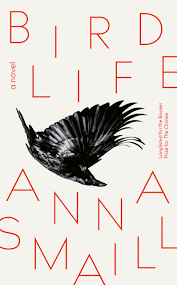Dinah Glover has fled to Tokyo from Oamaru, Aotearoa. She is living in prime real estate Itabashi, yet her apartment building and surroundings are weirdly deserted. Yasuko Kinoshita fled to Tokyo from Sapporo years ago, she is beautiful, immaculate, and stylish, yet also rude and coarse.
We first glimpse the two women in an extraordinary prologue describing various people in Ueno Park. We see the two women, both in distress, yet somehow privately coping. We know they will meet; we know they are separate, yet they will be drawn to each other. “How terrible it is, suddenly, to exist in a story.”
Both women work at an engineering and science university, both teaching English as a second language. Dinah is one of four native English speakers, who are kept quite separate from the Japanese ESOL staff. She dislikes the work, and is offside with the English language administrator. But all that changes when she is befriended by Yasuko.
Dinah and Yasuko are both dealing with loss, and neither are initially completely forthcoming with each other about the nature of their loss. The reader gradually discovers the burdens the women are living with as their stories unfold. They are both fragile and tragic: “There was not much holding a person together”, yet they are incredibly strong.The women cling to their daily patterns: “Routine was a kind of second-order magic” – Dinah sleeping outside in a park each night; Yasuko carrying tinned salmon in her Louis Vuitton handbag so she can feed stray cats. It was a cat who first spoke to Yasuko when she was 13, “‘Silly girl’, the cat said” – the beginning of her strength and her despair.
The men around Dinah and Yasuko are a source of threat, disappointment, and grief. There is Dinah’s twin brother Michael, who is an integral part of her. There is Yasuko’s son Jun, who she similarly sees as part of herself, and there is her untrustworthy and untrusting father. Tokyo is full of dangerous or unpleasant men, especially when clumped together in groups: “Yasuko was so tired of them. Deeply tired. In her body. She was tired of all the extra, entitled parts of them …”Each person suffers in their own way, yet how miraculous it is when they manage to help each other; when they see others as useful, or at least as benign. The plotting of Bird Life is careful and rewarding, the reader finding out information at just the right time. The beating heart of the novel comes from the rhythms of the two women.
One of the great characters in the book is Tokyo, with its crowded subway stations and its empty parks. Its shiny basement food halls and its dingy hole-in-the-wall eateries. Its designer departments and its homeless. Its beautiful sunny days and its casual earthquakes. The contrasts are echoed in the contradictions and jarring swings of Yasuko’s demeanour, and in the confusion and insecurity that are part of Dinah’s strength.Bird Life is an achingly beautiful description of how people deal with grief, with neurodiversity, with negotiating others; “Here we all are, sending up this light and warmth. It shouldn’t be hard just to leave everyone to get on with it by themselves.” The book conveys the enormous energy it takes to live with having lost someone, or something: “You could fall into despair about having lost a gift so young.” I really can’t recommend this book highly enough.

